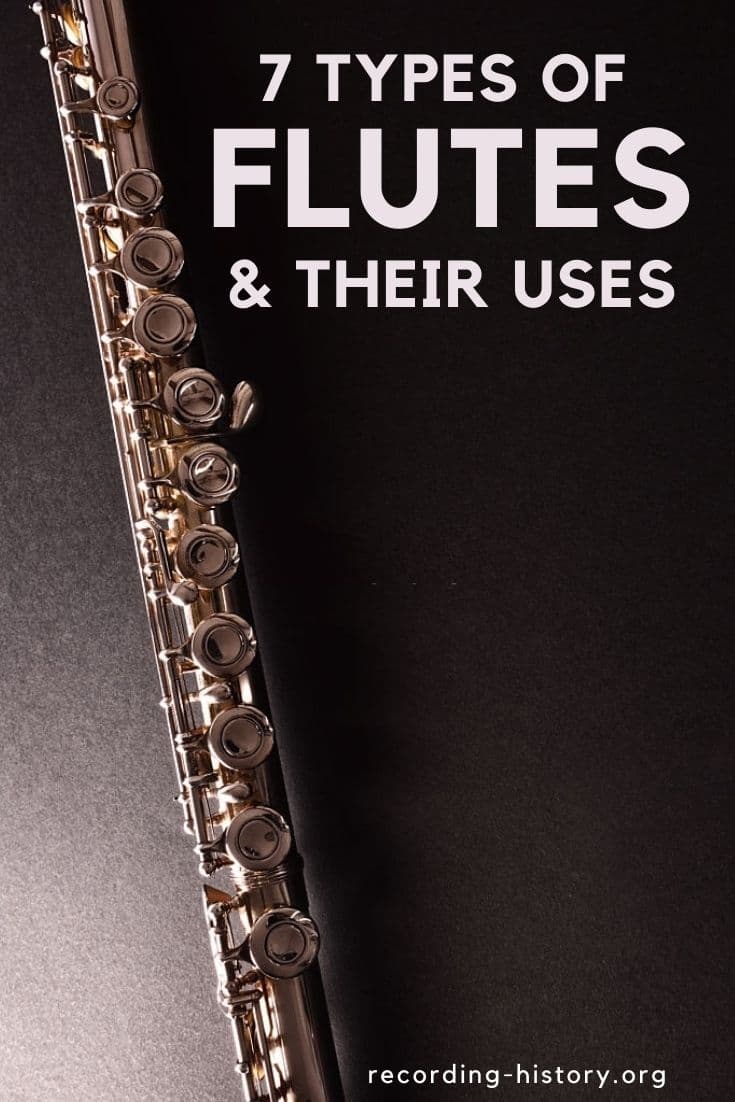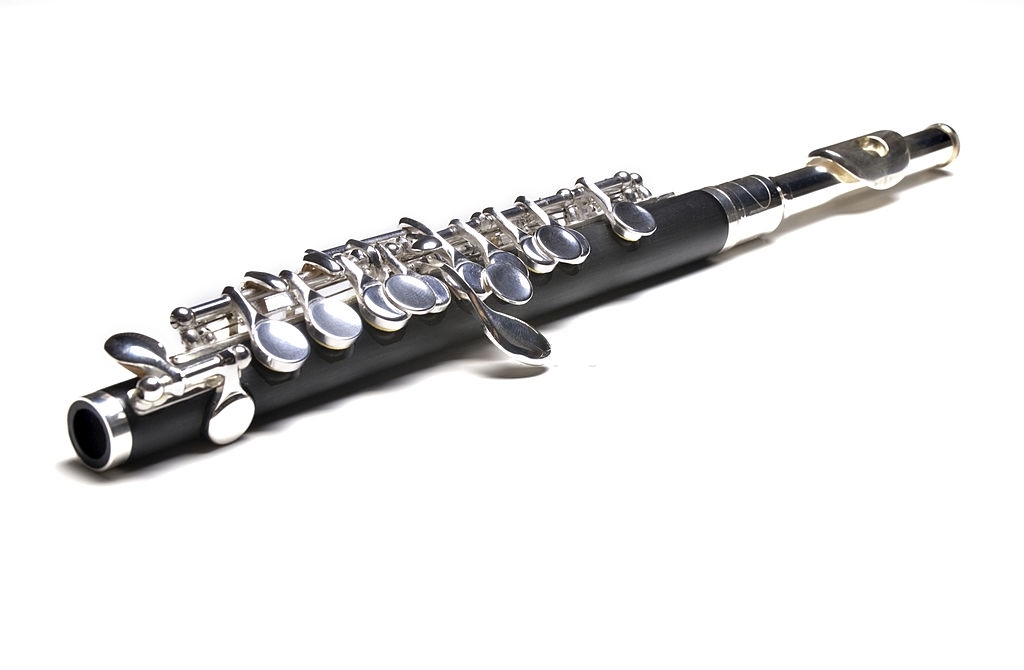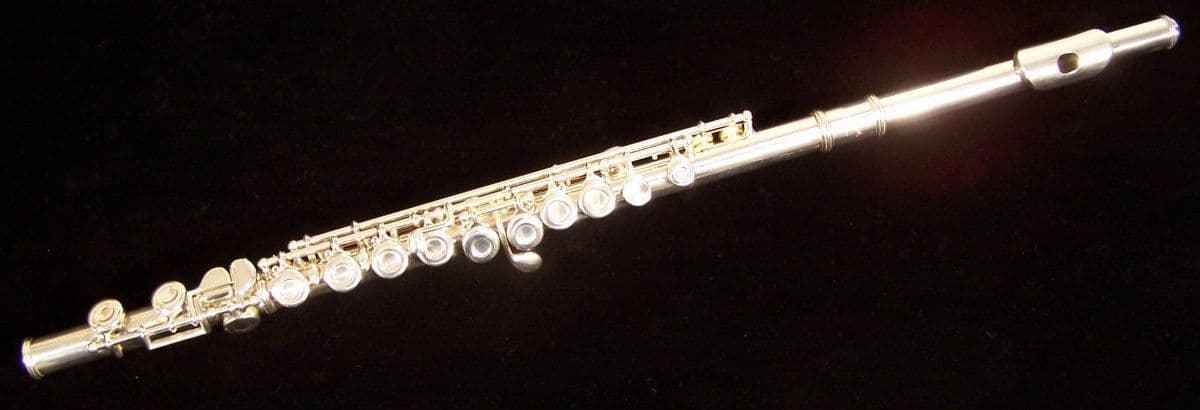7 Types Of Flutes and Their Uses
The flute is a woodwind instrument that you can use for sounding. The flute is different from woodwind instruments such as reeds. It’s a reedless wind instrument that produces sound when you blow across the opening, resulting from the flowing of air which oscillates to create sound.
This is a simple instrument that you can play by holding it with both fingers while blowing across the hole. You alter the pitch by using your fingers to open and close the keys.

A Brief History of the Flute
This is the oldest sound instrument in the world. The flute artifacts consist of bone that dates back to the ancient Stone Age period. The people who used flutes most in the past include the Ancient Sumerians, Egyptians, and Greeks. These ancient people used the flute similar to the recorder and not the common transverse flute today.
The first simple transverse flutes with a few holes were evident in Etruscan carvings in the fourth to first centuries. In the Middle Ages and Renaissance periods, people used simple wooden flutes with six military and folk music holes. They were never featured in musical works because of their problematic intonation and complicated cross-fingerings.
It’s until the nineteenth century when flute makers modified its diameter and the size of the tone holes by adding new keys and splitting the flute into three pieces. The flute design was revolutionized by a goldsmith and Theobald Boehm, who was a musician. Boehm used rods, pins, and springs to allow simultaneous closure of multiple keys. You can never play these keys with your hands, thus making Boehm develop a simpler fingering system.
The fingering system was experimented with different metals, using pads to seal the holes and cutting embouchure holes to get the best quality of tone. Generally, without the Boehm model, we could have never had a flute because the flute we play today is the courtesy of the Boehm model. As time passes by, composers are also showcasing the flute in an explosion of solo works.
Related: 13 Types Of Pianos and Their Uses
Types of Flutes
The flute family comprises Piccolo, Alto Flute, Bass Flute, Wooden flute, Eb Soprano Flute, c Flute, and Plastic Flute. These types of flutes share the same note fingerings. But they also differ in terms of the amount of breath, breath support, and embouchure formation between them.
1. Piccolo Flute

Piccolo is the smallest family of the flute. You cannot compare it with the concert flute in terms of length. It’s also the second most recognized instrument in the flute family. As mentioned earlier, a flute is the descendant of the popular military family in the Middle Ages, as is the piccolo. And that’s why the piccolo is so popular in military marches.
Besides being developed in the eighteenth century, the piccolo shares a similar history with the flute. Composers use piccolo in their regular orchestral works. They first used it to extend the range of the flute. Whenever a composer wanted a higher register than the flute allows, they would use piccolo to produce melody while the flute is playing harmony below.
Composers use ornamentation to decorate the melody through piccolo. In modern days, composers use piccolo regularly in their orchestral works and opera. Piccolo adds brilliance to a march. During the storm, you can use piccolo to produce high, sharp sounds to represent sparks. Softer tones from the piccolo can also create a feeling of tranquility in unison with the flute.
Piccolo can sound shrill, which in turn lowers its reputation. When it comes to playing, piccolo seems more difficult to play than other types of flute. It has a smaller embouchure hole that requires tighter embouchure and a faster air stream. Turning higher register in piccolo is also harder because of the smaller variation in wavelength for each note.
Piccolo only has head joint and body joint because of their small size. Materials used to make piccolo include wood, silver, plastic, and the combination of all these materials. If you’re looking for the best choice of piccolo, try out wood piccolos. They’re usually the best choice for orchestral work because of their rounder sound.
Also, both plastic and silver piccolos are more prevalent in marching bands since they can withstand moisture and temperature changes.
2. Alto Flute
Check this Alto flute on Amazon
Alto flute tends to produce a mellow distinct one when you play it in it’s lower pitch. This flute is made with a thicker and longer body and the make up enables it to produce its alto sound. The flute enhances the dynamics of the lower tones while playing. But you must also know that you need excellent lung power to play this flute.
Like other flutes, alto has also gone through various improvements to reach its current level. Modern flutes produce more high-quality sounds than the older ones thanks to the constant improvements. It’s makers developed sounds of Bb, Ab, G, F, Eb, and C during the development stages.On the downside, some flutists found it hard playing alto because of the stretching length in the keyhole and its embouchure sound.
But thanks to continued developments, Theobald Boehm created a flute that resembled a C and sounded like a C flute. This eventually developed into an alto. The Alto produces the sound G which is right below the C flute. The flute transposes music, which means their alto sound is one-fourth below C.
PLaying C flute needs the player to have a relaxed embouchure and provide a gentler stream of air in C flute. The alto flute has its keys spread apart; hence you can’t do rapid fingering style with it.
The alto flute produces a mellower sound than the c flute. Its sound contains more intriguing and mysterious effects. It’s also covered with powerful and deep colors of tones, although it lacks speed.
3. Bass Flute
Check this bass flute on Amazon
The bass flute is the least popular since it’s the least played flute. Despite being unpopular, the bass flute produces full round sounds and can reach full octave notes than the C flute. It’s also challenging to play because of its large size. Bass flute sizes also vary to some degree, whereby you can find some with 50-inch lengths, and the longest is about 60 inches.
Both flutists and flute makers have used different methods to accommodate this kind of flute’s large size and weight. Most bass flutes have a U-bend head joint, while others have two bends in the head joint with finger holes extending vertically.
Due to configuration, you can find bass flutes that look like the shape of a saxophone. But the only difference is that you can create sound by blowing air across the embouchure hole instead of directly into the instrument, which is the case with saxophone. Other bass flutes also have a flute tube that bends diagonally under the embouchure hole.
It has a brace acting as a resting place on your thigh when playing. The brace also gives support when you’re carrying this weighty instrument. Its large size and heavyweight make it the least popular among the music pieces. Bass flute is occasionally played as part of a flute ensemble or in orchestral performance.
4. Wooden Flute
Check this Wooden flute on Amazon
Wooden flutes also exist in different types. They’re also called Native American flutes. Wooden flutes have a similar sound to a metal flute. It looks sharp, clean, and focused, just like the metal flute. Wooden flutes have a mellower, earthier, and a sound that’s a little softer. This is because it uses a wooden head joint and not a metalhead’s joint.
The types of wooden flutes you need to know include directly-blown flute, rim-blown flute, end-blown, and side-blown flute. The name of these flutes is based on the opening’s location, where you can blow wind into the instrument to create sound.
5. Eb Soprano Flute

You can also call it the tierce flute. It’s the only type of flute that’s not pitched in G or C, making it a special member of the flute family. This flute is pitched in Eb, which is a minor third above other types of flute such as c flute and concert flute. The pitch key is also similar to baritone and alto saxophones. This enables it to be used by saxophone jazz players.
Finding this kind of flute is very difficult, especially today, meaning that the ones in existence are already old. Eb soprano flute produces a similar sound to that of c flute, which means that the techniques used to produce sounds are somehow the same.
6. Concert Flute
Check this concert flute on Amazon
This is the most common instrument in the flute family. Many people playing flute use it more often, and that’s why it’s widely known in the flute family. Apart from its popularity, it is the ideal flute for beginners. So if you intend to become a flutist, then don’t hesitate to try it out.
Most flutists commonly use it when playing orchestras, marching bands, concert bands, and jazz bands. It is fit for producing soloing, which means that the sound is a natural solo voice. And that’s the name soprano came from since the voice tone is fit for solo performances.
The C flute can also blend with almost all the band instruments except the oboe. They are octaves apart. Meaning, they get weaker as the oboes become stronger. But when the flute grows bolder in higher ranges, then oboes get timider.
C flutes can be more inconsonant with the bassoon, an octave, and in unison. Their timbers, which look quite similar, produce soothing and relaxing sounds.
7. Plastic Flute
Check this plastic flute on Amazon
Are you a flute enthusiast? If yes is the answer, then your kids will also love to follow your steps? And the best way to make your kids learn how to play the flute is to provide them with their favorite flute, the plastic flute. This is a unique flute that you need to be aware of, especially if you have kids.
It’s the real deal for children because of its first note mouthpiece. The first note mouthpiece enables your kids to produce good sounds out of the flute even if they’re playing it for the first time. It features interchangeable parts that make flutists of different levels and beginners to advanced students play it with ease.
Beginners can easily use it and continue to progress in their flute playing skills. Others feature plastic flutes that are lightweight. They are cheaper and are available in different colors that are more attractive. Cleaning them is very easy. Don’t forget how durable this type of flute can be.
What is the most common type of flute?
Concert flute is the most common flute family that everyone knows and loves. It’s very common because of its non-transposing feature, which enables it to produce the exact sound in written music. Concert flute comes in silver or even in more precious metals such as platinum and gold. It’s the best flute player across the flute family.
Which flute is the easiest?
The easiest flute is the Yamaha YFL-222 Student Flute. Maybe you’re asking why it is the easiest flute. Well, this is the perfect flute for beginners. The manufacture of this instrument ensures that it has a versatile tone to serve the player well. It has durable neoprene key bumpers, which makes it suitable for beginners. It also offers a lot of ease to the players who are starting.
What is a long flute called?
Concert flute is the longest flute family you should know. It comes in 26 inches in length, and it’s pitched in the key of C.
What is the smallest flute?
The piccolo is the smallest flute you can come across. You cannot match its length with the length of other flutes. The word piccolo also means small in the Italian language. It measures approximately half the length of the concert flute, although it’s the highest-pitched flute.
What is the biggest flute?
The biggest flute is the double contrabass flute. It’s also called the octobass. It comprises metal. That’s why it’s bigger than hyperbass despite having the lowest pitch. This huge instrument measures 8 feet tall and has a tubing of up to 22 feet as it weighs about 30 pounds. Some flutes that can get near it in terms of size and pitch include contrabass and sub-contrabass flutes, which measure 9 feet and 11 feet each.
What is the most expensive flute?
The most expensive flute is a Verne. O Powell flute, serial number 365. This expensive instrument boasts a wall platinum model with sterling silver keys.
How much do professional flutes cost?
Professional flutes come with various options, including tubing material, riser metal, lip plate, head joint cuts, and trill key options. Other options include soldered tone holes, roller options, tubing thickness, and engraving. The prices of these professional flutes range from as low as $3195 to over $20000.
What does a flute symbolize?
The flute is believed to be a symbol of god. It symbolizes god’s voice. For instance, Ancient Egyptians believed the voice of Isis, which is the god’s mother, was drawn out of the flute. The flute also symbolizes nature and rural life. Apart from this, the gods themselves gave the flute to mankind as a gift.
Conclusion
As a flutist, you don’t have to settle for only one type of flute because flutes are very diverse. The choice can be overwhelming. Some produce both high and low notes, while others produce either high or low notes. Also, remember that the material of the flute influences the sound it can make. So, don’t just concentrate on one kind but diversify your knowledge as a flutist.










![6 Best Intermediate Flute: Top Picks for Advancing Musicians ([year]) 21 6 Best Intermediate Flute: Top Picks for Advancing Musicians (2025)](https://images.recording-history.org/wp-content/uploads/2024/01/best-intermediate-flute-768x384.jpg)

![6 Best Flute for Beginners: Top Picks for New Musicians ([year]) 23 6 Best Flute for Beginners: Top Picks for New Musicians (2025)](https://images.recording-history.org/wp-content/uploads/2024/01/best-flute-for-beginners-768x384.jpg)